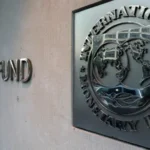The United States is imposing steep new tariffs, some as high as 3,521%, on solar panel imports from four Southeast Asian countries, marking a major shift in the country’s clean energy trade strategy. These duties on solar imports are intended to protect domestic manufacturers but could present serious challenges for U.S. solar developers.
Here’s what’s happening, who it affects, and what it could mean for the future of renewable energy in the U.S.
What Are the New Tariffs?
The U.S. Department of Commerce announced on Monday that solar panel imports from Cambodia, Vietnam, Malaysia, and Thailand will face new duties, some of them at jaw-dropping levels:
- Cambodia: Up to 3,521% (country chose not to participate in the investigation)
- Vietnam: Up to 395.9% for unnamed companies
- Thailand: Up to 375.2%
- Malaysia: Up to 34.4%
The penalties vary by company. For example, Jinko Solar was hit with 245% on exports from Vietnam and 40% from Malaysia. Trina Solar faces 375% in Thailand and over 200% from Vietnam, while JA Solar modules from Vietnam could be assessed at around 120%.
Why Is the U.S. Doing This?
These tariffs are the result of a yearlong investigation that found solar companies in the four Southeast Asian nations were selling solar panels below cost and benefiting from unfair government subsidies. These actions were viewed as violating trade laws and undercutting U.S. manufacturers.
“The findings confirm what we’ve long known: that Chinese-headquartered solar companies have been cheating the system, undercutting U.S. companies and costing American workers their livelihoods,” one official said.
Understanding the duties on solar imports can help consumers and businesses adapt to the evolving solar landscape.
The probe was initiated under President Joe Biden after a petition from the American Alliance for Solar Manufacturing Trade Committee, which includes U.S. manufacturers like First Solar, Hanwha Q Cells, and Mission Solar Energy LLC.
Duties on Solar Imports and Their Implications
U.S.-based solar manufacturers who have long struggled to compete with cheaper imports now benefit from the duties on solar imports, allowing them to recover market share.
Losers:
U.S. solar developers and installers, who depend heavily on imported components, could see project delays and rising costs. The four targeted countries accounted for $12.9 billion in solar equipment imports in 2023—roughly 77% of total U.S. solar module imports, according to BloombergNEF.
Market Reaction: Business as Usual?
While the duties on solar imports may benefit local manufacturers, they also raise questions about the future affordability of solar technology.
The high duties on solar imports could result in a significant shift in how projects are financed and executed in the coming years.
Despite the massive numbers, Chinese solar stocks didn’t move much following the announcement. Shares of Trina Solar fell 1.6%, Jinko Solar dipped 0.9%, and JA Solar was down just 0.1%.
That’s partly because the industry had braced for this decision and has already taken steps to protect itself. Many companies have shifted manufacturing to tariff-free nations like Indonesia and Laos.
According to BofA Global Research, “We don’t think the higher rates will have much financial impact especially post recent reciprocal tariffs.”
Could Other Countries Be Targeted Next?
Yes. A note by Roth Industries, citing Joseph C. Johnson of Clean Energy Associates, suggests that countries like India, Indonesia, and Laos could be next in line for similar scrutiny.
Meanwhile, JA Solar told Bloomberg it’s “closely monitoring the U.S. tariff development while accelerating its globalization efforts.” The company is building a plant in Oman, expected to open by late 2025, with 6-gigawatt cell and 3-gigawatt module capacity.
What Happens Next?
The impact of duties on solar imports may lead to a reevaluation of supply chains within the solar industry.
Businesses must stay informed about the duties on solar imports to navigate potential changes in the market.
The new duties are still contingent on a final decision by the U.S. International Trade Commission, which is expected to determine within the next month whether domestic producers are being harmed or are at risk.
As the situation evolves, the duties on solar imports may redefine competitive dynamics within the renewable energy sector.
This isn’t the first time the U.S. has tried to curb unfair trade practices in the solar sector. Similar duties were imposed on Chinese imports over a decade ago, prompting Chinese companies to shift operations to countries not impacted by those tariffs—a cycle that may repeat.
For now, the U.S. solar sector faces a new wave of uncertainty, caught between supporting local jobs and keeping clean energy affordable.






